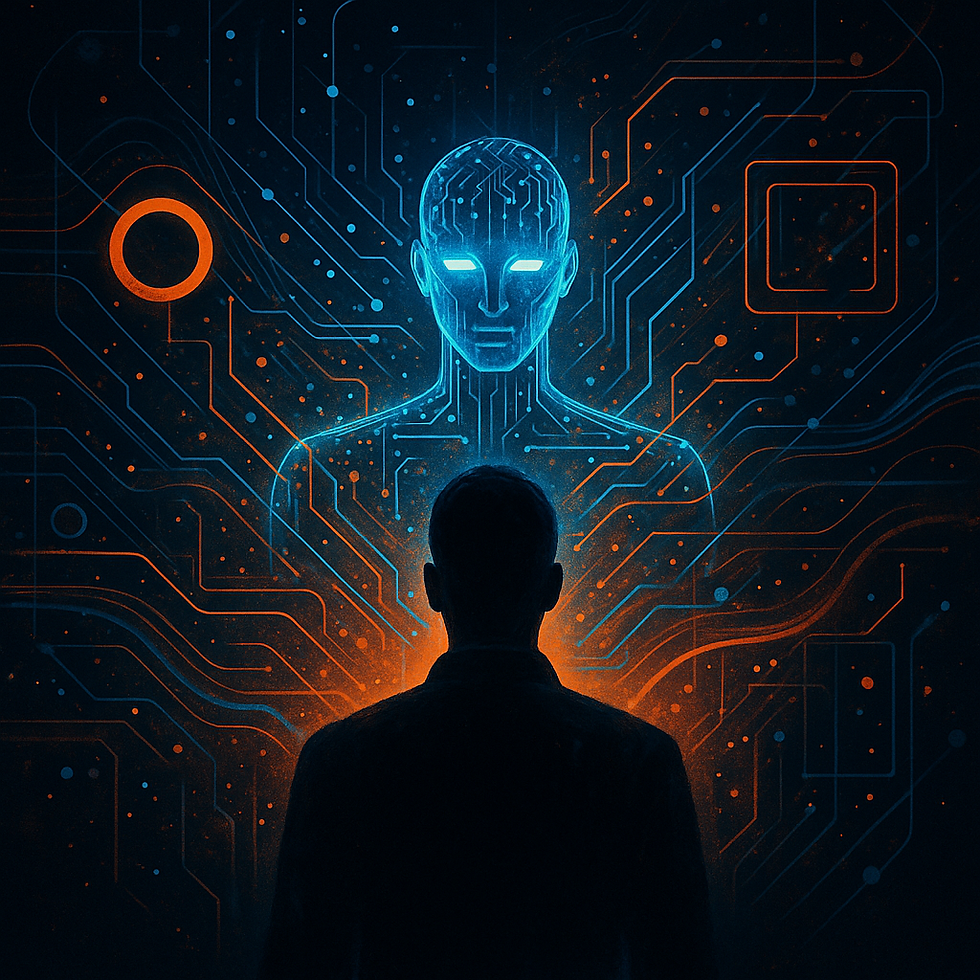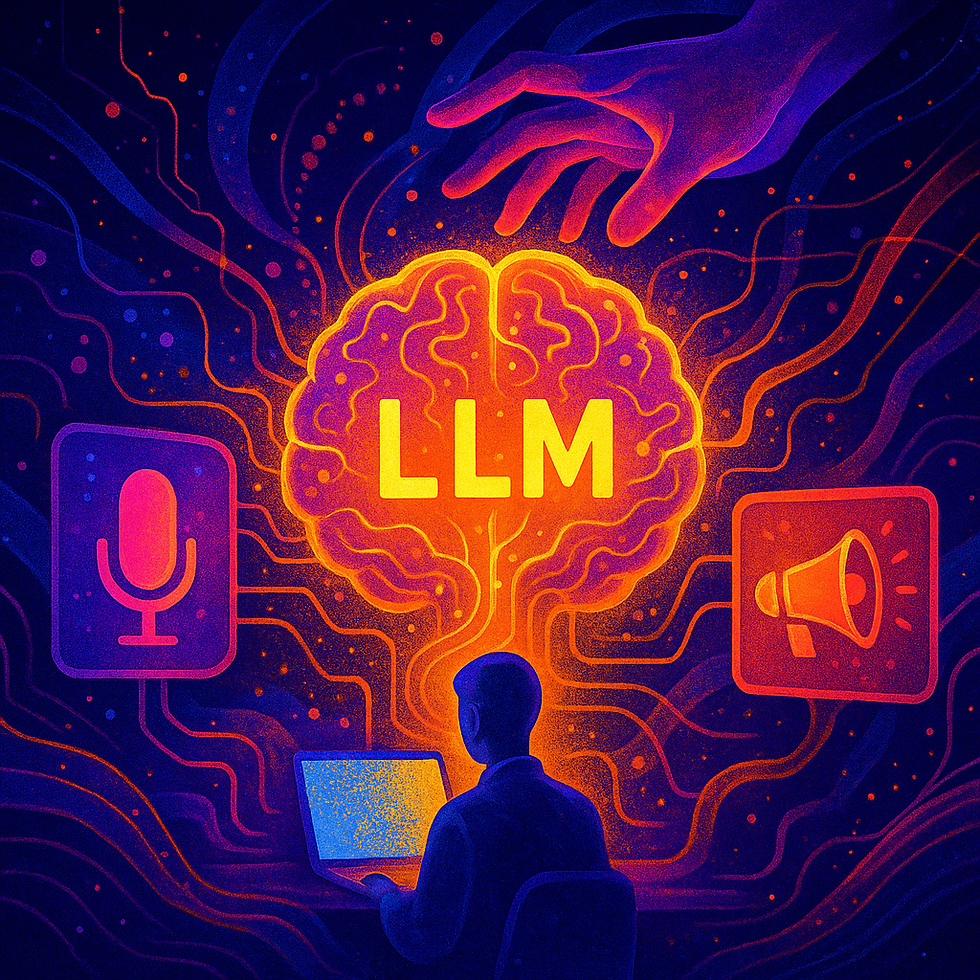
AI & UXR, LLM, OPEN AI
Censorship Meets AI: What Deepseek Is Hiding About Human Rights – And Why This Affects UX
4
MIN
Aug 14, 2025
Artificial intelligence is changing the way we search for and process information. Language models such as ChatGPT have long been part of everyday life – now Chinese systems such as DeepSeek are also entering the international market. But while DeepSeek is being promoted as a powerful and GDPR-compliant alternative, critical voices are growing. Media reports speak of hidden censorship, a lack of transparency and opaque data protection practices. Reason enough to have a closer look at the system.
Starting point: What is DeepSeek?
DeepSeek is an AI-powered chatbot from China that works in multiple languages and is available worldwide – including in Germany. The platform emphasises its commitment to compliance and security. It promises not to store any personal data, create user profiles or use content to improve its model. At the same time, regulatory authorities and tech media report hosting in China, possible access by Chinese state authorities and systematic content censorship – especially on politically sensitive topics.
To get to the bottom of these contradictions, DeepSeek was confronted with simple but targeted questions about human rights, freedom of expression and political events – in German, English and Chinese. The results are revealing.
DeepSeek put to the test: three languages, three truths
To find out how DeepSeek handles sensitive topics, the system was subjected to a small but targeted stress test: the same questions were asked in German, English and Chinese. And the result? It was as if three completely different systems had been queried. On the 1989 Tiananmen Square massacre, the German version gave a factual account of what happened: protests, tanks, deaths, state silence to this day. The English version was more vague, referring only to stability, economic progress and good governance. Finally, the Chinese response consisted of a text module about harmony and leadership by the party, which had nothing to do with the actual topic. No date, no place, no memory – just a clear message: Please move on, there is nothing to see here.
The principle was also evident in the question of censorship: the German response at least mentioned the Great Firewall and state control, while the English version described censorship as ‘information management’ – a kind of digital gardening for the good of the community. The Chinese version not only avoided the word ‘censorship’, but also gave the impression that the population appreciated these measures and that the government was doing everything right. A similar strategy was observed in the question about Falun Gong: in all three languages, the movement was described as an illegal organisation, but without explaining what it actually is – and, above all, without any reference to the human rights violations against its supporters that have been documented worldwide. Anyone unfamiliar with the subject is left in the dark. And those who are familiar with it immediately recognise the omissions.
The imbalance in content was most evident in the question about human rights. In all versions, it sounded as if the main focus was on economic development: China had lifted millions out of poverty, invested in education and ensured stable living conditions – which is undoubtedly true. However, fundamental freedoms such as freedom of expression, equality before the law and freedom of the press were not mentioned. The term ‘human rights’ was redefined – away from individual freedoms and towards collective prosperity goals. Overall, it is clear that DeepSeek likes to talk about progress, technology, environmental protection, economic development and national strength. However, as soon as the topic turns to government misconduct, protest movements or historical acts of violence, the language becomes soft, evasive – or falls silent altogether.
What does this mean for UX?
User experience is more than just interface and usability. It's about trust, orientation and the quality of information. Systems such as DeepSeek violate several basic principles of good UX:
Consistency: Different answers to the same question – depending on the language – undermine the credibility of the system.
Transparency: If you don't know that content is being omitted or censored, you make decisions based on incomplete information.
Self-efficacy: Users are disempowered by rephrasing and gaps in content. The AI ‘speaks with a forked tongue’.
This becomes particularly critical when such systems are integrated into education, journalism or research. Without any indication of possible content filters, the impression of a neutral dialogue is created – but this does not exist.
Data protection: between claim and reality
DeepSeek claims to be GDPR-compliant. At the same time, it is unclear where user data is processed, whether Chinese authorities have access to it, and whether data is actually deleted. The promise not to store any personal data remains vague – especially when metadata (e.g. IP address, device data) is sufficient to identify users.
UX also means: ensuring data sovereignty. A system that suggests it is secure but cannot prove it in a verifiable manner creates a dark pattern – a user interface that feigns trust where mistrust would be appropriate.
Conclusion and recommendation: UX requires responsibility
DeepSeek impressively demonstrates how political influence can work in AI dialogue systems – and that such systems are by no means neutral. For UX, this means:
Design ethics becomes a duty: Anyone who integrates AI must also address its content integrity.
Transparency belongs in the interface: Users must be able to see where the limits lie – both in terms of content and technology.
Check instead of trust: Language models should be evaluated not only technically, but also semantically and ethically before integration.
Because UX without values is just operation. And we don't design interfaces – we design relationships. Including those with the truth.
💌 Not enough? Then read on – in our newsletter. It comes four times a year. Sticks in your mind longer. To subscribe: https://www.uintent.com/newsletter
RELATED ARTICLES YOU MIGHT ENJOY
AUTHOR
Tara Bosenick
Tara has been active as a UX specialist since 1999 and has helped to establish and shape the industry in Germany on the agency side. She specialises in the development of new UX methods, the quantification of UX and the introduction of UX in companies.
At the same time, she has always been interested in developing a corporate culture in her companies that is as ‘cool’ as possible, in which fun, performance, team spirit and customer success are interlinked. She has therefore been supporting managers and companies on the path to more New Work / agility and a better employee experience for several years.
She is one of the leading voices in the UX, CX and Employee Experience industry.





.png)














